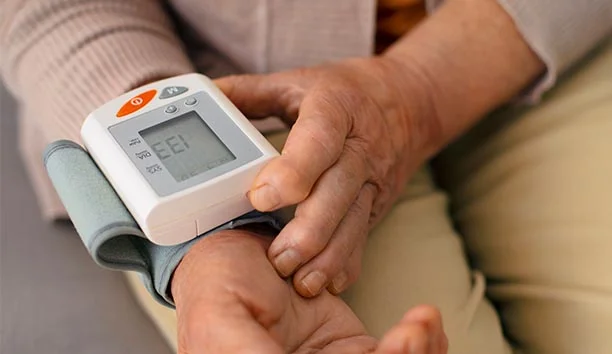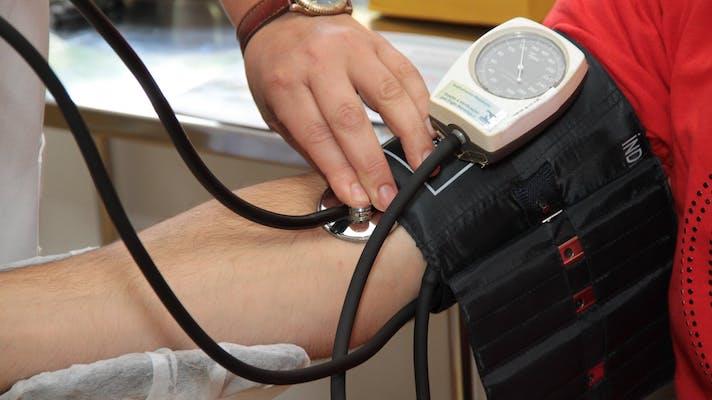The Advantages of the ABPM Examination for Accurate Blood Pressure Analysis
Ambulatory Blood Pressure Monitoring (ABPM) supplies an innovative method to evaluating high blood pressure. This method supplies continual, 24-hour data, catching changes that happen during daily activities and sleep. Such detailed monitoring not just boosts accuracy but likewise reveals vital patterns, assisting to compare real hypertension and conditions like white-coat syndrome. Comprehending these nuances can cause extra efficient treatment strategies. What ramifications might this have for person care and monitoring?
What Is Ambulatory Blood Pressure Monitoring (ABPM)?
Ambulatory Blood Pressure Monitoring (ABPM) is a technique that permits continual blood stress evaluation over a 24-hour period, giving a considerable image of an individual's blood pressure fluctuations. ABPM test in Bangalore. This strategy uses a portable tool that instantly determines blood pressure at normal periods throughout the day and evening. As people tackle their everyday activities, the gadget catches information reflecting their high blood pressure variants during different times and scenarios, including sleep and physical exertion.ABPM is particularly advantageous for identifying problems such as high blood pressure, as it can compare true high blood pressure and white-coat disorder, where people show raised analyses in scientific settings however not in their everyday lives. By offering an in-depth view of high blood pressure modifications, ABPM aids doctor in making notified decisions pertaining to medical diagnosis and treatment. In addition, it boosts the understanding of blood stress patterns, enabling personalized monitoring methods for patients
Constant Monitoring for Improved Precision
Constant monitoring of blood stress via ABPM considerably improves the precision of readings contrasted to traditional techniques. This technique enables for blood pressure measurements at routine intervals throughout the night and day, recording fluctuations that might take place as a result of day-to-day activities, stress and anxiety, or various other variables. Unlike solitary readings taken throughout a clinic browse through, ABPM supplies a thorough account of a client's blood stress over a 24-hour period.This continuous assessment causes extra reputable information, enabling doctor to identify patterns and prospective concerns that might go unnoticed with erratic measurements. It likewise assists distinguish between true high blood pressure and white-coat disorder, where individuals display raised analyses as a result of anxiety in a medical setting. By leveraging the benefits of continuous monitoring, ABPM considerably boosts medical diagnosis and therapy approaches, eventually adding to much better individual end results and more personalized medical care techniques.
Recognizing Blood Pressure Irregularity
Blood pressure variability describes the fluctuations in blood stress readings that can take place gradually due to different aspects, including exercise, tension, and body clocks. This variability is considerable as it provides insights into an individual's cardio health. ABPM test in Bangalore. Elements such as workout can momentarily enhance blood pressure, while relaxation might lead to a reduction. In addition, the body's natural rhythms can create blood pressure to vary throughout the day, typically being lower during the night and higher during waking hours. High levels of variability have been connected with enhanced risks of cardio occasions, making it crucial for medical care experts to monitor these changes. Understanding high blood pressure irregularity assists in tailoring therapy strategies and assessing general health. Exact assessment through methods like Ambulatory Blood Pressure Monitoring (ABPM) can catch these variations, permitting an extra extensive examination of a client's blood stress profile
Determining White Coat Hypertension
White coat high blood pressure, frequently described as white layer syndrome, is characterized by raised blood stress readings in scientific settings due to anxiousness or stress and anxiety. Acknowledging its symptoms and signs is essential for accurate diagnosis, as false impression can lead to unneeded therapies. Understanding this sensation is essential for effective high blood pressure monitoring and client treatment.
Comprehending White Coat Syndrome
Several clients exhibit elevated blood stress readings in scientific setups, this sensation, understood as white coat hypertension, can obscure the true state of their cardiovascular health and wellness. This condition occurs when individuals experience anxiety or stress and anxiety during medical sees, bring about momentary spikes in blood pressure. Therefore, healthcare companies may misinterpret these readings as a measure of high blood pressure. White coat syndrome highlights the relevance of exact high blood pressure assessment, as counting only on in-office measurements can cause unneeded treatments or misconceptions concerning a client's wellness. Recognizing this disorder is vital for clinicians, as it emphasizes the demand basics for alternate monitoring approaches, such as ambulatory blood stress monitoring (ABPM), to acquire a more precise depiction of a client's high blood pressure levels.
Symptoms and Indicators
Numerous people may experience certain symptoms that suggest the presence of white coat high blood pressure. These symptoms can consist of elevated high blood pressure readings throughout clinical brows through, accompanied by feelings of anxiousness or anxiousness in a scientific environment. Clients commonly report a rapid heart beat or sweating when connecting with health care specialists, which may worsen their high blood pressure degrees. In addition, some people may discover a variation between their in-office blood pressure readings and those taken at home, where they really feel much more kicked back. Identifying these signs and symptoms is essential, as they can show that stress or stress and anxiety relevant to clinical setups is influencing their blood pressure. Comprehending these indications can help in determining white layer high blood pressure and determining the requirement for additional evaluation.

Value of Accurate Diagnosis
Accurately identifying white coat high blood pressure is vital for reliable high blood pressure monitoring. This problem takes place when a person exhibits raised high blood pressure readings in a scientific setup due to stress and anxiety or stress and anxiety, while normal analyses are videotaped in an extra unwinded atmosphere. Misdiagnosis can bring about unneeded treatment, exposing clients to prospective medication negative effects with no real wellness advantage. The usage of ambulatory blood pressure monitoring (ABPM) is essential in differentiating true high blood pressure from white layer additional resources syndrome. ABPM gives constant blood stress measurements over 24 hours, enabling a comprehensive analysis that can aid healthcare companies make notified decisions. Eventually, precise recognition of white layer hypertension warranties patients obtain ideal treatment and avoids the challenges of mismanagement.
Analyzing Nocturnal Blood Pressure Patterns
Examining nocturnal blood stress patterns is crucial for comprehending an individual's general cardiovascular health. Nighttime measurements can reveal considerable variations in blood pressure, which might show hypertension irregularity. Additionally, these patterns are closely associated with heart wellness, highlighting the relevance of continuous monitoring beyond standard office visits.
Importance of Nighttime Measurements

Nighttime blood pressure measurements are often essential for comprehending an individual's total cardiovascular health and wellness. These analyses supply essential understandings right into how high blood pressure behaves throughout rest, you could check here which can vary markedly from daytime levels. Keeping track of nighttime high blood pressure enables the identification of irregular patterns, such as non-dipping or reverse-dipping phenomena, which might show a boosted threat for cardiovascular occasions. Additionally, nighttime analyses can assist evaluate the efficiency of antihypertensive treatments, guaranteeing that drugs are appropriately handled. By catching high blood pressure modifications throughout the evening, health care specialists can develop a lot more individualized treatment strategies, ultimately boosting individual end results and minimizing the probability of lasting difficulties related to high blood pressure. This emphasizes the significance of complete blood pressure evaluation throughout the day and evening.
Discovering High Blood Pressure Variability
How can the variability of nocturnal blood stress patterns notify high blood pressure administration? The assessment of nighttime high blood pressure with the Ambulatory Blood Pressure Monitoring (ABPM) examination discloses vital variations that frequently go unnoticed in conventional measurements. These patterns can indicate the visibility of "non-dipping" hypertension, where high blood pressure fails to drop during rest, recommending a raised cardiovascular risk. By identifying such variability, healthcare companies can tailor interventions better, adjusting treatment strategies based on the client's specific nighttime high blood pressure actions. Understanding these patterns likewise aids in reviewing the efficiency of antihypertensive drugs, making certain that individuals attain ideal blood stress control throughout the night and day. Subsequently, nighttime assessment comes to be essential in thorough high blood pressure administration.
Connection With Heart Health
Comprehending nocturnal blood stress patterns not only help in hypertension management but likewise has considerable implications for heart wellness. Research shows that uncommon nocturnal high blood pressure analyses, such as non-dipping or reverse dipping patterns, are linked with boosted cardiovascular risks. Throughout sleep, blood stress typically decreases, a sensation vital for cardio recovery. When this decline is missing, it may signify underlying problems such as autonomic dysfunction or increased arterial stiffness. Furthermore, individuals with raised nighttime blood stress are at an increased threat for cardiovascular disease and stroke. Making use of ambulatory blood pressure monitoring (ABPM) to evaluate these nocturnal patterns can supply crucial understandings, permitting for customized treatments that much better protect heart health and improve general individual results.
Customizing Treatment Plans Based on Real-Life Data
Customizing treatment plans based on real-life data involves leveraging continuous blood stress keeping an eye on to produce individualized medical care approaches. The Ambulatory Blood Pressure Monitoring (ABPM) examination gives a comprehensive profile of a patient's blood pressure variations throughout everyday tasks. This in-depth data enables doctor to determine patterns that may be overlooked in standard workplace visits.By assessing changes in blood stress during different times and problems, medical professionals can adjust medications, dosages, and way of living suggestions to much better match private patient needs. This tailored strategy not only enhances the performance of therapy strategies but additionally minimizes the probability of unfavorable responses to medications.Furthermore, real-life information can disclose prospective triggers for hypertension, bring about positive treatments. In general, customizing treatment based upon constant monitoring promotes an extra reliable, patient-centered strategy to managing hypertension and enhancing lasting health and wellness end results.
Enhanced Client Compliance and Interaction
While typical monitoring methods might restrict individual involvement, making use of Ambulatory High blood pressure Monitoring (ABPM) substantially improves patient conformity and engagement in their own medical care. By allowing individuals to wear a mobile device that tapes high blood pressure over 24 hr, ABPM encourages people to take an active role in their health administration. This continual monitoring provides a more extensive view of high blood pressure variations, motivating individuals to understand their condition better.Moreover, ABPM fosters an atmosphere where individuals can review their analyses with medical care providers much more meaningfully, bring about notified decision-making. Patients end up being more bought adhering to suggested treatments and lifestyle adjustments when they see real-time data showing their wellness standing. The shift from passive individual to energetic partner not only improves conformity yet also boosts total wellness results, making ABPM an important tool in fostering client engagement in high blood pressure monitoring.
Often Asked Concerns
The length of time Does an ABPM Test Normally Last?
The ABPM test generally lasts 24 hours. Throughout this period, it gauges blood pressure at regular periods, supplying a detailed evaluation of a client's blood stress patterns throughout their everyday tasks and sleep.
Are There Any Dangers Connected With ABPM Testing?

Can ABPM Be Used for Kids and Teenagers?
ABPM can be used for kids and teenagers, offering vital understandings into their blood pressure patterns. However, correct equipment sizing and analysis by qualified professionals are critical to ensure accurate analyses and prevent misdiagnosis.
Exactly How Is ABPM Different From Traditional Blood Pressure Monitoring?
ABPM varies from conventional monitoring by providing continual high blood pressure readings over 1 day, capturing variations throughout daily activities and sleep, whereas standard techniques often depend on solitary measurements, possibly missing vital variations in blood stress.
What Should Individuals Do Throughout the ABPM Examination?
Throughout the ABPM examination, patients must preserve regular tasks while staying clear of hefty workout, extreme caffeine, and cigarette smoking. They must also keep their arm still when the tool pumps up, ensuring accurate readings throughout the monitoring period.